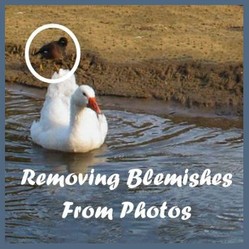In our new online world, aspiring photographers can offer the fruits of their digital labors to stock photo sites or can use their images to design a myriad of print-on-demand products on sites such as Zazzle. In my enthusiasm, I began taking photos of everything and anything and submitting them to different sites. I am happy to say that a number of my photos were accepted by dreamstime, a stock photo site, but the most interesting part was why some were rejected. The technical rejections are not relevant to this article, but two other reasons are:
Firstly, they requested model releases for those photos in which a person is recognizable. Secondly, they asked me to either edit out trademarks that appeared on the photos or just not submit them in the first place.
In one of my shoots, a security guard came running out of the building I was photographing, telling me I could not take any pictures of it because the building was protected by copyright. He threatened to call the police. I thought he was wrong, but he sufficiently intimidated me that I moved on.
What is the story here? When do we need permission to take photographs and when do we not? Do we need model releases? This is the first of a two-article series in which I discuss these questions and provide some answers. The link to the second article is on the sidebar.
(Thumbnail photo of model from: PublicDomainPictures.net)










 Visiting an Art Gallery With a Two-Year-Oldon 07/27/2015
Visiting an Art Gallery With a Two-Year-Oldon 07/27/2015
 Using the News to Enhance Jewish Identity in Jewish Kidson 07/24/2015
Using the News to Enhance Jewish Identity in Jewish Kidson 07/24/2015
 Xi'an - Not Just Terracotta Warriorson 06/09/2015
Xi'an - Not Just Terracotta Warriorson 06/09/2015
 Sew Your Own Wedding Dress - or Your Daughter'son 02/06/2015
Sew Your Own Wedding Dress - or Your Daughter'son 02/06/2015



Comments
Well, I don't know about my questions being terrific (but thanks), but your answers are wonderful. Re 1, I think the letter is a great idea! 2. Great answer here as well. Never thought of it this way. It may make sense to enter photo contests then because it will impact all your output, and you can then use images on mugs, etc. So thank you for this idea! 3. You have a good point there too, but I somehow think the house should be off-limits. You do want some light in the house, after all. But I can see how you can't implement anything along those lines, or else you wouldn't be able to use any photos of buildings at all (assuming there are some windows and people close to them)!
Thank you very much for the discussion and for your great answers!
Mira - regarding your comment about the photos taken through a window from the outside, but showing people in their homes. I have read that as long as you can see through the window from the street, without entering the property, then people cannot have an expectation of privacy. If they want privacy, they can close their curtains. Again, as long as the photos are not demeaning, it should be okay.
Mira - about your second question, and how to determine if something is art or not. I think it would need a consensus of peers - does the person participate in workshops for artists? Does the person belong to an online forum of artists and contribute to discussion in a meaningful way? Has the person's material been exhibited in a brick-and-mortar gallery or has it been accepted onto an online artist-oriented site that is selective regarding the material they accept?
Personally, while I have photos that have been accepted by a stock photo site, that cannot count toward me being an artist because stock photos are commercial photos. However, on a public domain photo website, I won 3rd prize in a photo contest and that might count toward me being regarded as an artist. I think you need something solid to show that you somehow merit the title, artist. What do you think?
Mira - these are terrific questions. I'll each each separately, just to keep things straight in my own mind.
1 - Regarding royalties to a charitable organization - I think, actually, this can get quite sticky. If people heard about it, they might feel used and say they don't want the money and they don't agree to the photos. But that is the nature of art photography - the person photographed will likely not win a suit (as has already been tested in court) unless the photo is demeaning. I always wondered about one particular young woman whose photo first appeared in National Geographic and then was sold all over the place on posters. I don't think she ever saw any money from the sales, nor did her tribe or village. I, personally, would feel better, if one of my photos became very successful, to go back and give royalties either to the family or an organization in the community, with a letter clearly stating that these were a percentage of the profits from the sale of prints/posters/etc and that it is my way of giving back to the community that provided the opportunity to make a piece of art..That letter should be all that is needed to make a connection between the two.
I enjoyed your article and have two questions.
1. If you pay royalties to a charitable organization, how do you connect those royalties to the photos taken of some people in that area?
2. If you take a photo and treat it like a work your art yourself, how do you know courts will see it that way too? I never found a satisfactory answer myself as to what constitutes art. So you may go ahead and put it on a mug, and eventually get in trouble.
As for the expectation of privacy (and the question of what constitutes art), just as a side note, I read an article once about a photographer in New York (I think) who photographed people in their home for a month (I think) through the window, and presented the photos as art. Was that art? And was that ok? Courts were still debating on it. I think the issue was going to an appeals court.
Thanks, Pam. It is very important to use original photos and the commercial photographer needs to know what is allowed and not allowed in their own photographs.
This is a very interesting article Sheri. I have learned over the years what Zazzle will not accept, which has contributed to my knowing how to use pictures taken by others. I use my own photos whenever I can, which also makes them original.